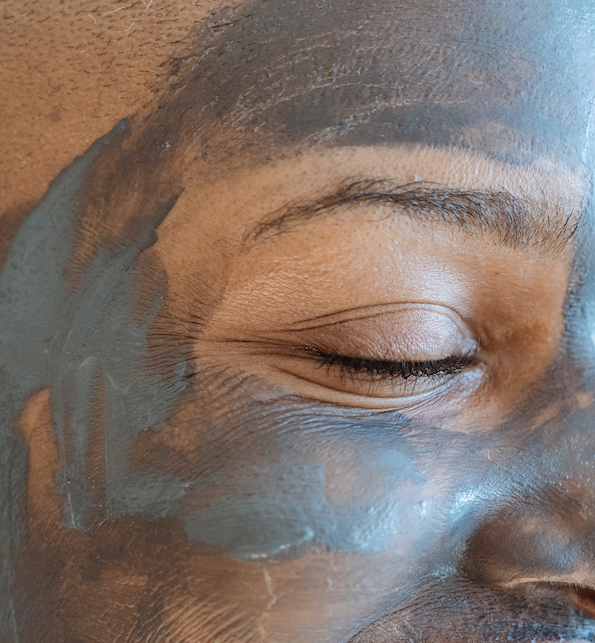Clay has always been used by humans for medicinal, ritualist or even materialists; mud mud and clay bathing, mummies, writing support, poultice on a wound, ... The clay was once popular as plants concerning its benefits multiple and universal. Novices of this kind of practice can be reluctant to the types of clays that there is, however, learn the differences and benefits specific to each of them would allow them to be more easily integrated into your daily life, and in particular in a routine cosmetic.
Proprieties of clay
The clay obviously comes from the Earth, in its simplest, or unrefined form, it is ready to use as soon as it is taken from the ground; This is his side practical. It is a natural rock material due to the erosion of rocks by wind and water, a material is then obtained in the form of powder composed of minerals andtrace elements such as iron (transport of oxygen in the blood), magnesium (cell metabolism), calcium (nail and skin metabolism), zinc (regeneration of tissues and collagen) ... These are minerals that found naturally In OUR body, which is why clay is an ingredient that can be useful for restructuring body and skin.
The clay has two major capacities:
- Absorption
Clay is renowned for " strive "Water, fats, dirt and toxins which makes it an excellent ally for your face masks in order to withdraw THE impurities Deposed on it during the day.
- Adsorption
This property allows the clay of capture And fix all molecules and gases on its surface. Thus, the "magnet" effect when the clay is applied to your skin allows you to keep the clay minerals necessary for the balance of your epidermis.
Widely used for homemade hair masks recipes, or make poultice on the body in case of pain, clay can however be easily integrated into a cosmetic routine for the face. Many tutorials exist on the internet to find recipes specific to your problem: dry hair, dehydrated skin, acne skin or dandruff.
Each type of clay is distinguished by certain specificities but in general terms includes the following:
- Healing
- Decongestant
- Anti-inflammatory
- Cleansing
- Antifungal
- Antiseptic
- Softening
Benefits of clay according to his skin
We differentiate the clays by their color: green, red, white, pink, yellow ... Indeed, it is the origin and nature of the soil in which it is which will bring it this peculiarity of color but also of minerals present . It is the quantity of iron In the surrounding floors which will give its color to the clay, we therefore get down to a parade colored.
It would be a mistake to believe that they have the same properties, on the contrary, you have to know how to recognize their differences. Indeed, the clay is all the more compatible as it is associated with the right skin type. Dry skin does not have the same priorities at all as acne skin since its epidermis does not have the same problem. If you know your skin type, then it will be easy for you to choose the right clay for your next homemade mask.
- White clay
Only colorless clay given the quantity tiny of iron present in its composition, the kaoline (or white clay) is renowned for revealing the splendor of the skin Without being aggressive for the most sensitive skin. She is gentle and makes it possible to decongest everything in eliminating THE toxins and dead cells.
- Green clay
Surely the best known clay on the market because it is very recognizable, green clay is that which is the more active In terms of its benefits : purifying, anti-inflammatory, and rebalancing, green clay is mainly recommended for oily skins has acne trend. Rich in aluminum, silica and lime, it also has healing and antibacterial benefits conducive to purify the skin, hair and wounds.
- Red clay
Iron is very present in its composition hence its red color, this clay is very popular with people who wish to find look good And forget their dull complexion. Mature skin Appreciate the red clay for its toning side and its revival for good traffic. She relieved Also the rollers on the face, which is why it is used by people with rosacea.
- Gray clay
Also known as Rhassoul Or Ghassoul, gray clay is well known to hair care because it can be used as a shampoo or detoxifying mask for the scalp. In terms of cosmetic benefits, gray clay is perfect for mixed skins has fat Because it has virtues purifying And degreasing.
How to use the clay for a treatment
Whether it's a facial or hair treatment, when you make a house recipe from a mask, be sure not to use metal object To stir for example. Favor utensils in drink, silicones or in glass. The second essential advice (which however very little applies): Do not dry The clay on his face! It is a very bad reflex that dries up the skin and makes the clay lose all its properties. If you prefer to make your mask act, use a water spray or a hydrosol to moisten your face every 3 minutes and hydrate your skin correctly after the mask.
Always with regard to clay face masks, these are very effective when adding other active ingredients depending on its skin problem. Some examples below:
Acneic oily skin mask
- 2 tbsp of green clay
- 1 tsp jojoba oil
- 3 tbsp of lavender hydrosol
Mix to obtain a creamy paste, to leave for 10 minutes and then rinse with lukewarm water.
Sensitive and irritated skin mask
- 2 tbsp of white clay
- 1 tbsp of avocado oil
- 3 tbsp of chamomile hydrosol
Mix to obtain a creamy paste, to leave for 10 minutes and then rinse with lukewarm water.
Mask purifying all skin types
- 2 tbsp of gray clay
- 1 tbsp of argan oil
- 2 drops of tea tree essential oil
- 1 tbsp honey
- 1/2 tbsp of water
Mix to obtain a creamy paste, to leave for 10 minutes and then rinse with lukewarm water.
It's your turn to inaugurate recipes in your bathroom!


